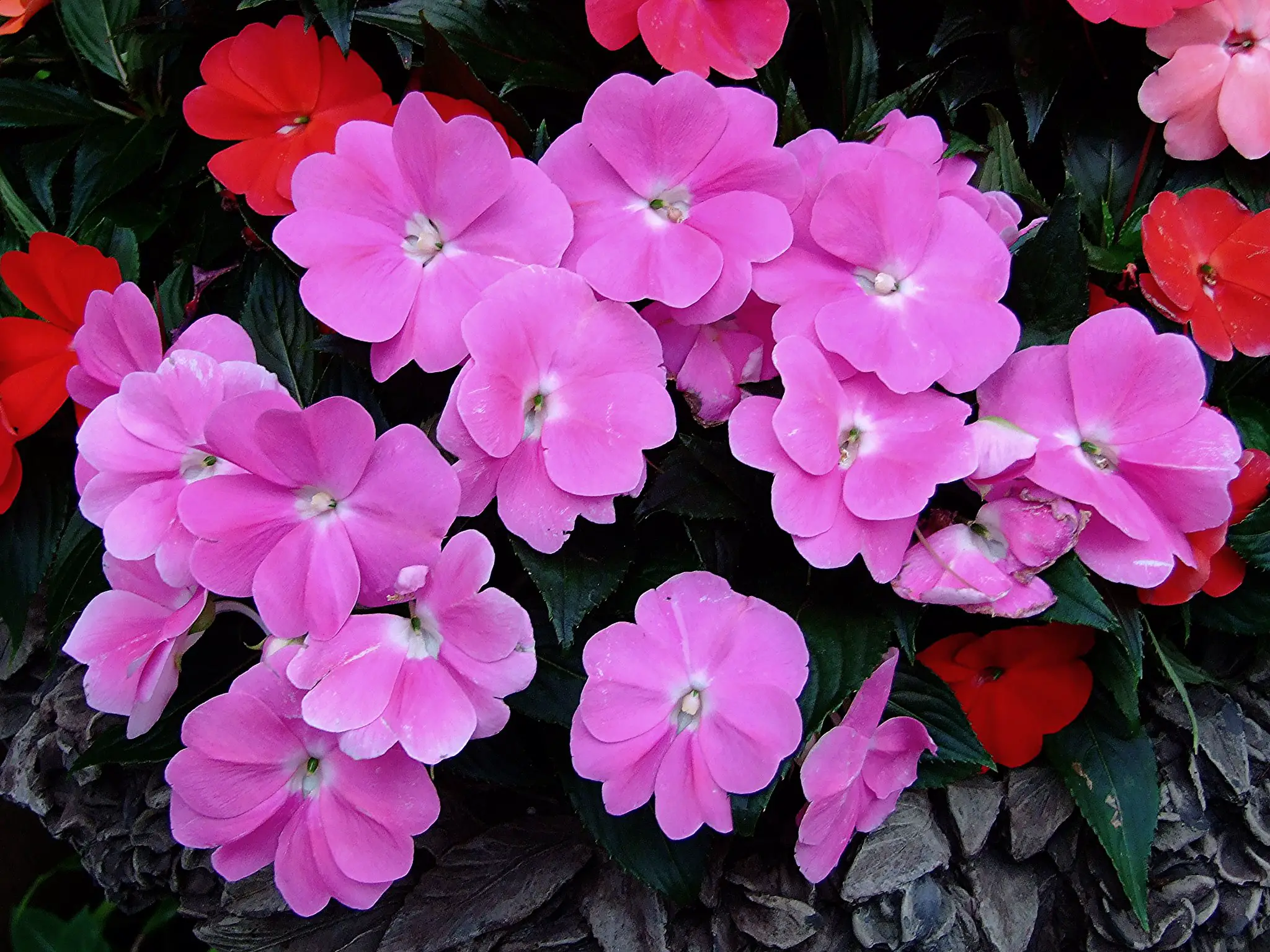
Image – Flickr / Kai Yan, Joseph Wong
Our guinean joysalso called New Guinea Hybrids, are very colorful flowers and that is why they are beautiful to have in the garden. The scientific name of these flowers is Impatiens hawkeri and they are the younger sisters of the popular joy of the house (Impatiens walleriana).
That is why if you have joys of the house in your home you should take similar care with the Guineans. As with them, the plant gives us flowers in spring and summerAlthough if we are lucky they may last a few more months. Even so, it is an annual plant, that is, it is discarded every year.
Origin and characteristics of Guinean joys

Image – Wikimedia Commons / Forest & Kim Starr
Guinean alegrías are herbaceous plants native to New Guinea, which develop green, tan or reddish leaves, simple and lanceolate. They reach a height of about 20 to 30 centimeters, and their flowers are of different colors: pink, red, white, yellow. They bloom from spring to summer, after which they produce fruit with seeds before dying.
This is so because their life cycle is annual, that is, in a year (actually, in less time) they germinate, grow, flower and give seeds. For this reason, its growth rate is quite fast.
What care do these plants need?
If you want to have a copy of Guinean joy, we recommend providing the following care:
Location
- Interior: it can live well indoors if you put it near a window, as it needs a lot of light (not direct) to grow.
- Outdoor: place in a bright area, but without direct sun. This will prevent burning.
Irrigation
It is a plant that needs to be watered when it is hot, but avoid getting it wet when it is not sunny as then mold can appear on the leaves and flowers. The watering must be abundant but avoiding that the roots get puddled because then they rot. Irrigation should be abundant in summer and scarce in winter.
To avoid losing it, it is advisable to water it 2-3 times a week in summer and a little less the rest of the year. However, if in doubt, check the moisture of the substrate or soil, for example with a digital moisture meter or by digging around a bit.
Humidity
Do not spray / spray its leaves as they will rot. If the humidity in your house is very low, it is better to place glasses with water or a humidifier around it.
Earth

Image – Wikimedia Commons / Forest & Kim Starr
- Flower pot: fill with universal substrate mixed with 30% perlite.
- the garden: the garden soil must be rich in organic matter, and facilitate the drainage of water.
Subscriber
From early spring to late summer:
- Flower pot: In order to produce a large quantity of flowers throughout the season, it is advisable to fertilize it regularly with a liquid fertilizer for flowering plants (on sale here!) following the instructions specified on the packaging, or if you prefer something more natural, with guano (for sale here!) or seaweed extract.
- the gardenFertilize the soil with mulch, compost, or herbivorous animal manure.
Planting or transplanting time
Guinean joy has to be planted in the garden in spring. In the case of having it in a pot, it will be enough to pass it once to a larger one as soon as you buy it.
Multiplication
Multiply by seeds and cuttings in spring, following this step by step:
Seeds
- First, a seedling tray is filled with soil specific for seedlings, or with universal substrate mixed with 30% of perlite.
- Then, it is watered conscientiously, moistening the whole earth well.
- Afterwards, a maximum of two seeds are placed in each alveolus, and they are covered with a thin layer of substrate.
- (Optional but recommended): put a little copper or powdered sulfur on top to avoid the appearance of fungi.
- Finally, place the seedbed outside, in semi-shade.
Keeping the soil moist but not flooded, they will germinate in about 10 days. When the seedlings measure about 8 centimeters, they can be transferred to pots or the garden.
Cuttings
A faster way to get new copies is cutting stems and placing them in a glass of water. This water must be changed daily, and once it has roots, the plant must be planted in a pot with substrate or in the garden.
Pruning
To help plants in their growth it is recommended sprout young stems in spring so that it branches, and thus achieve that it produces more flowers.
Do this with previously disinfected scissors, and trim only the first inch of each stem.
Pests
It is quite resistant in general, but can be attacked by aphids, Red spider y White fly. All of them can be treated with ecological insecticides like potassium soap (for sale here!) or diatomaceous earth.
Rusticity
Guinean joy cannot stand cold or frost.

Image – Wikimedia Commons / Forest & Kim Starr
What did you think of Guinean joy?
